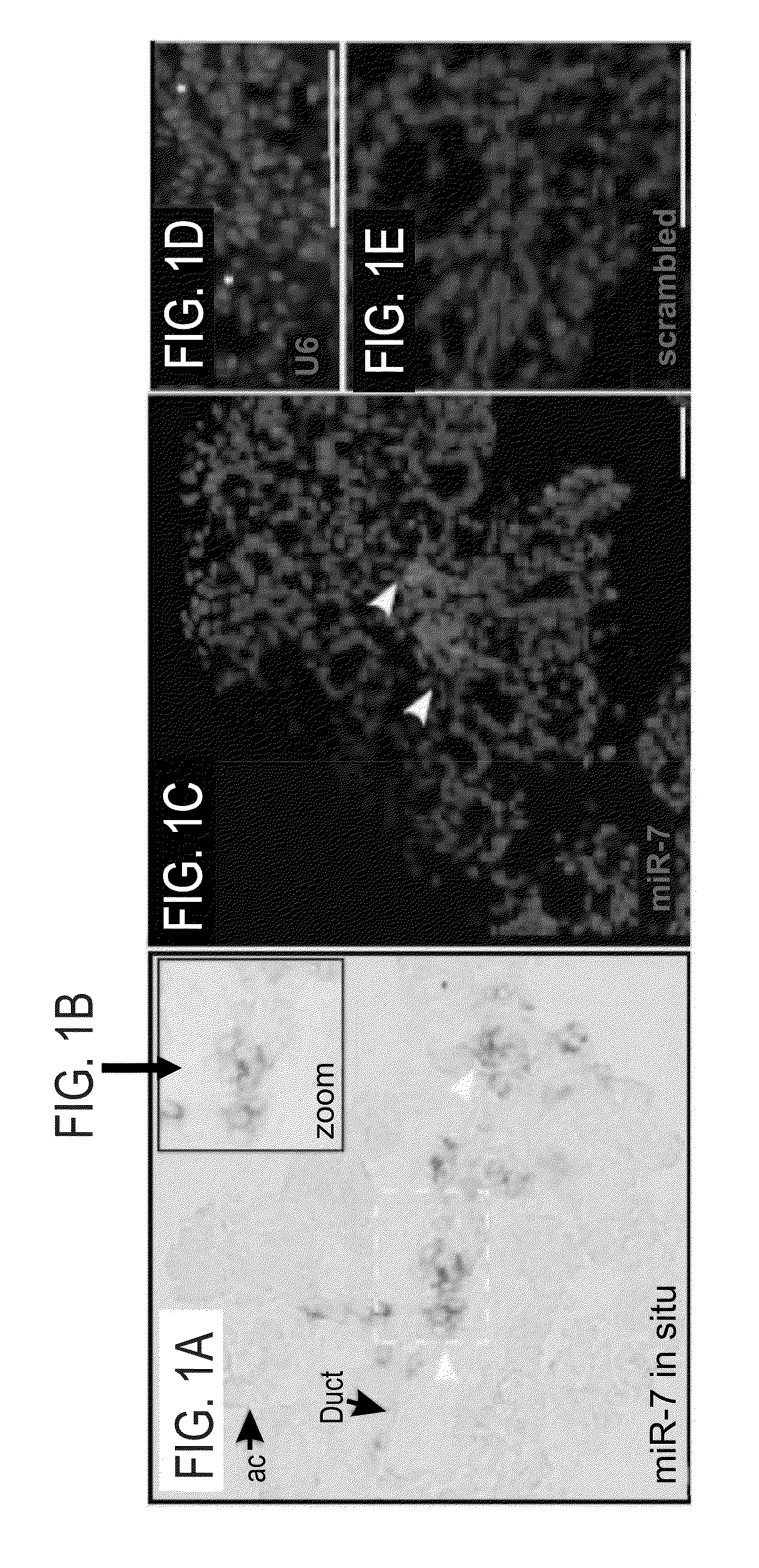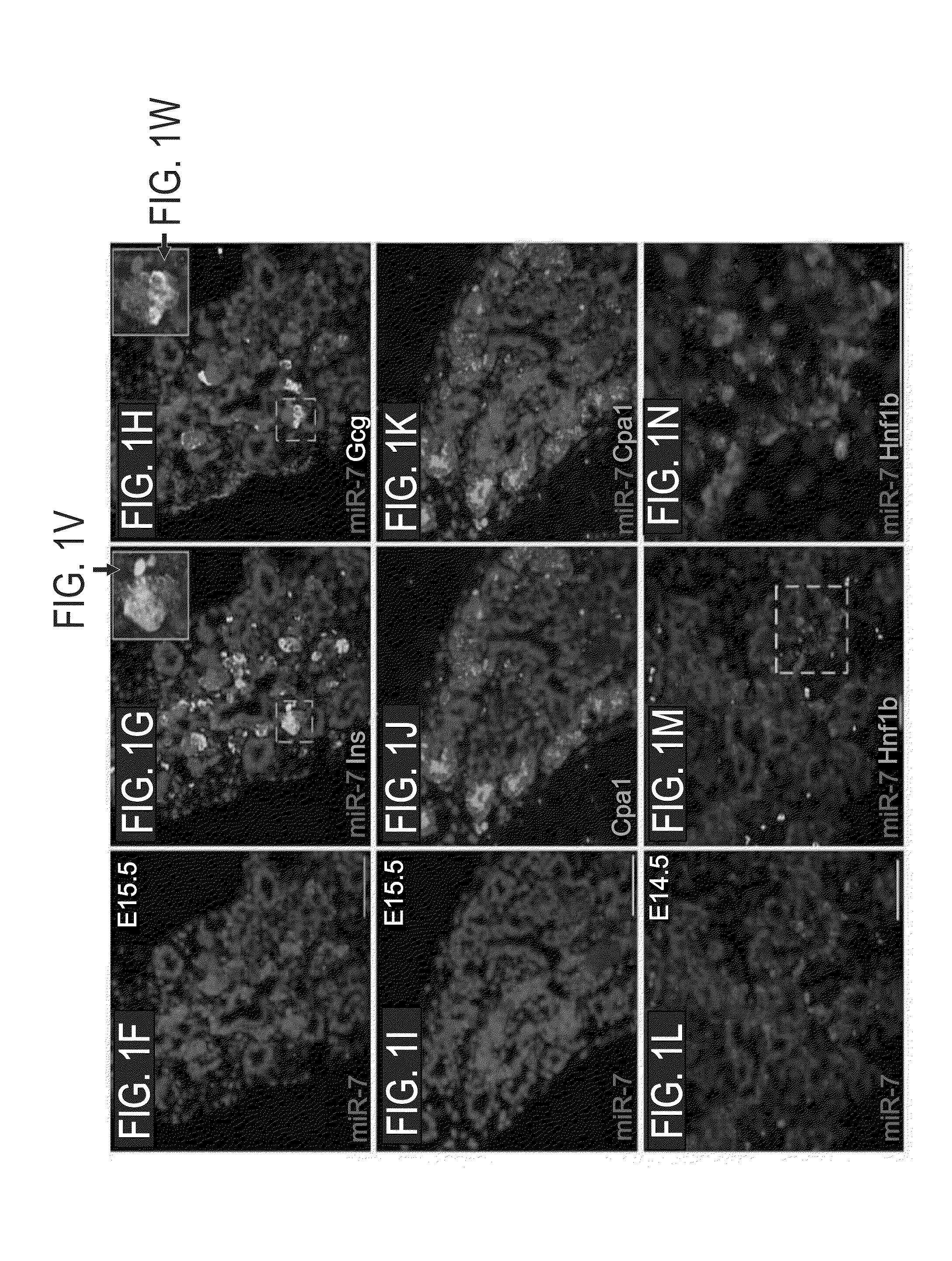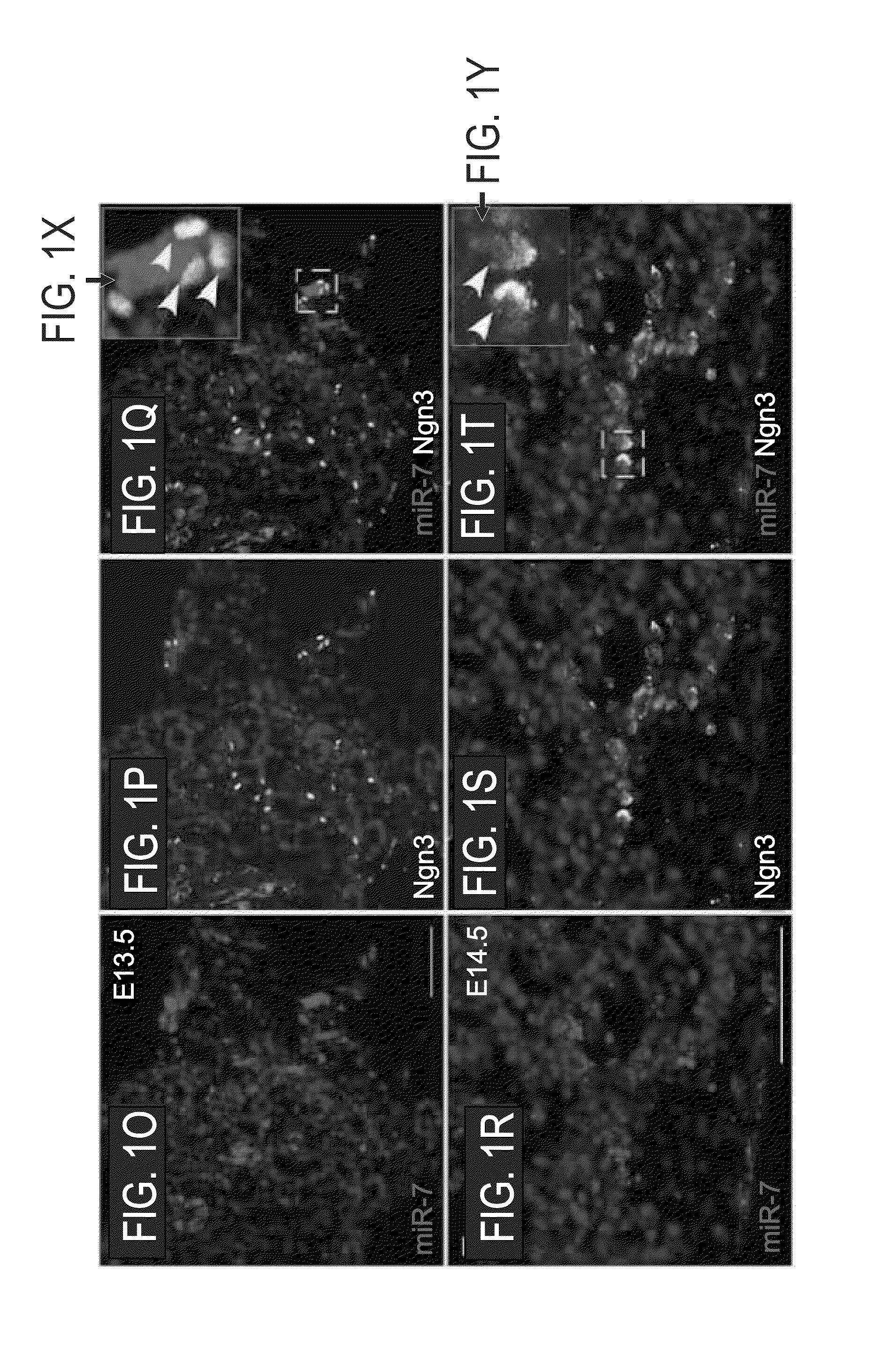DOWNREGULATION OF miR-7 FOR PROMOTION OF BETA CELL DIFFERENTIATION AND INSULIN PRODUCTION
a technology of mir-7 and beta cell differentiation, applied in the field of mir-7 downregulation, can solve the problems of glucose intolerance, abnormal eye appearance, and abnormal embryonic development, and achieve the effect of increasing the insulin content of beta cells
- Summary
- Abstract
- Description
- Claims
- Application Information
AI Technical Summary
Benefits of technology
Problems solved by technology
Method used
Image
Examples
example 1
miR-7 is Expressed in the Endocrine Cells of the Pancreas
[0289]To determine the spatial expression pattern of miR-7, the present inventors carried out in situ hybridization combined with immunefluorescent protein detection on E12.5-E15.5 pancreatic sections, using a digoxigenin (DIG)-labeled LNA probe. At this time point, called ‘secondary transition’, many endocrine cells are generated within the pancreatic epithelium. Bright field analysis revealed that miR-7 expression was restricted to a subset of clustered epithelial cells at the “trunk” compartment of the branching pancreatic epithelium (FIGS. 1A-B). To identify in higher resolution what cell types expressed miR-7, the present inventors carried out fluorescence in situ hybridization. This experiment revealed clusters of miR-7 expressing cells (FIG. 1C). The hybridization pattern was specific to miR-7 and could not be detected with a probe against the ubiquitously-expressed small RNA U6 or a scrambled miRNA sequence (FIGS. 1D-E...
example 2
Pax6 is a miR-7 Target
[0290]To identify potential miR-7 targets that play a role in pancreas development, two unbiased bioinformatic approaches were employed. First, ‘gene ontology’ (GO) was analyzed in terms related to miR-7 targets [DAVID, as previously described in Dennis G. et al., Genome Biol. (2003)4, P3]. Among the 237 predicted miR-7 targets [TargetScan as described in Lewis et al. (2005) Cell, 120, 15-20], the GO term ‘Regulation of transcription’ was found to be the most significantly enriched (52 genes, P−7). Intriguingly, within this list, Pax6 was the only established pancreatic transcription factor (see Tables 2-4, below, and FIG. 2A). Furthermore, the binding site for miR-7 at the Pax6 mRNA 3′ untranslated region (3′ UTR) is predicted to be strong and conserved (FIG. 2B),
[0291]Independently, an interaction map was built of miRNAs with the 3′ UTRs of transcription factors that are known to control pancreas development, including Pdx1, Ngn3, Nkx2.2, Nkx6.1, MafB, Pax4, ...
example 3
miR-7 Controls Endocrine Differentiation in Explants Culture
[0294]To determine the functional role of miR-7 in the endocrine lineage, inventors carried out gain- and loss-of function experiments in a primary pancreatic explant system (see schematic illustration in FIG. 3A). E12.5 pancreatic buds were cultured for 48 hrs under defined ex-vivo conditions, providing a reliable model for normal development [as previously described by Kredo-Russo, S. and Hornstein, E. (2011), supra]. Inventors detected typical Ngn3, insulin and miR-7 expression that recapitulated in-vivo differentiation, including the expected differentiation of alpha and beta cells (FIG. 4A-E).
[0295]To manipulate miR-7 expression in organ cultures, inventors used cholesterol-conjugated 2′-O-methyl (2′OMe) ‘antagomirs’ against miR-7 or miR-7 ‘mimic’ oligos (termed ‘miR-7 KD’ and ‘miR-7 OE’, respectively). As ‘non-targeting’ negative controls, inventors used antagomirs against the liver specific miR-122, which is not expr...
PUM
| Property | Measurement | Unit |
|---|---|---|
| thickness | aaaaa | aaaaa |
| size | aaaaa | aaaaa |
| pore size | aaaaa | aaaaa |
Abstract
Description
Claims
Application Information
 Login to View More
Login to View More - R&D
- Intellectual Property
- Life Sciences
- Materials
- Tech Scout
- Unparalleled Data Quality
- Higher Quality Content
- 60% Fewer Hallucinations
Browse by: Latest US Patents, China's latest patents, Technical Efficacy Thesaurus, Application Domain, Technology Topic, Popular Technical Reports.
© 2025 PatSnap. All rights reserved.Legal|Privacy policy|Modern Slavery Act Transparency Statement|Sitemap|About US| Contact US: help@patsnap.com



